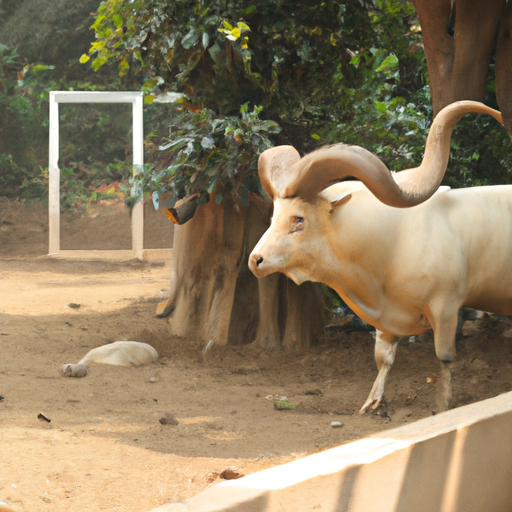 Are animals big? This seemingly simple question may have crossed your mind at some point, perhaps while observing the vast diversity of creatures that inhabit our planet. The answer, however, is not as straightforward as it may initially appear. Animals come in all shapes and sizes, ranging from microscopic organisms to colossal giants that defy our imagination. In this article, we will delve into the fascinating world of animal size and explore the reasons behind the variation we observe.
Are animals big? This seemingly simple question may have crossed your mind at some point, perhaps while observing the vast diversity of creatures that inhabit our planet. The answer, however, is not as straightforward as it may initially appear. Animals come in all shapes and sizes, ranging from microscopic organisms to colossal giants that defy our imagination. In this article, we will delve into the fascinating world of animal size and explore the reasons behind the variation we observe.
To understand why some animals are big, it is essential to examine the concept of size itself. Size can refer to both overall body dimensions and individual body parts. Animals have evolved to be different sizes for a multitude of reasons, including adaptation to their environment, predation pressures, reproductive strategies, and physiological constraints.
One of the most fundamental factors influencing animal size is the principle of surface area-to-volume ratio. As animals grow larger, their volume increases at a faster rate than their surface area. This has significant implications for metabolic needs, heat regulation, and nutrient exchange within an organism. Smaller animals, such as insects, have a larger surface area relative to their volume, which allows for efficient gas exchange and nutrient absorption. Conversely, larger animals face challenges in maintaining these vital processes, often requiring specialized adaptations.
Within the animal kingdom, size can be observed across various taxonomic groups. In the world of invertebrates, the largest known arthropod is the Japanese spider crab, with a leg span of up to 3.8 meters (12.5 feet). This immense size allows it to deter potential predators and scavenge for food on the ocean floor. In contrast, the microscopic tardigrade, also known as the water bear, measures a mere 0.5 millimeters (0.02 inches) in length. Despite its minuscule size, this tiny creature possesses incredible resilience, capable of surviving extreme temperatures, radiation, and even the vacuum of space.
Moving up the taxonomic ladder, we encounter a diverse range of vertebrates that exhibit remarkable variation in size. Fish, for example, display an extraordinary array of sizes, from the diminutive dwarf goby, measuring just 1 centimeter (0.4 inches) long, to the colossal whale shark, which can reach lengths of up to 12 meters (40 feet). These size differences are often driven by ecological factors such as food availability, habitat requirements, and predator-prey dynamics.
Among reptiles, the saltwater crocodile holds the title for the largest living reptile, with males reaching lengths of up to 6 meters (20 feet) and weighing over 1,000 kilograms (2,200 pounds). This formidable predator inhabits estuaries and coastal waters, where its size serves as an advantage in capturing prey and establishing dominance. Conversely, the world’s smallest reptile, the Brookesia micra, is a tiny chameleon found in Madagascar, measuring a mere 2.9 centimeters (1.1 inches) in length. Its diminutive stature allows it to camouflage effectively among the forest undergrowth, evading predators and capturing unsuspecting prey.
Mammals, too, showcase a wide range of sizes. The blue whale, the largest animal to have ever existed, can reach lengths of up to 30 meters (98 feet) and weigh over 180 metric tons. Its colossal size is primarily driven by the need to consume vast amounts of krill, its primary food source. In contrast, the bumblebee bat holds the title for the world’s smallest mammal, weighing a mere 1.6 grams (0.06 ounces) and measuring just 3 centimeters (1.2 inches) in length. This tiny bat, found in Thailand and Myanmar, feeds on nectar and pollen, relying on its small size to access flowers and navigate within dense vegetation.
While ecological factors play a significant role in determining animal size, other considerations, such as reproductive strategies, can also influence an organism’s body dimensions. In many species, larger individuals have a higher reproductive success, leading to a positive correlation between size and fitness. This phenomenon, known as sexual selection, is particularly evident in species where males compete for access to mates. For instance, male African elephants with larger tusks are more likely to win dominance battles, gaining the opportunity to mate with multiple females. This competition for reproductive success can drive the evolution of increased size in males.
Furthermore, environmental conditions and resource availability can influence an animal’s growth and size. For example, in regions with limited food resources, animals may undergo stunted growth, resulting in smaller individuals. Conversely, in resource-rich environments, animals may experience enhanced growth rates, leading to larger body sizes. This plasticity in growth allows animals to adapt to their specific circumstances, optimizing their chances of survival and reproductive success.
It is worth noting that not all animals follow the trend of larger size equating to increased fitness. Some species have evolved to be small, allowing them to exploit unique ecological niches. Insects, for instance, have conquered diverse habitats and evolved intricate adaptations due to their small size. They can occupy microenvironments, access hidden food sources, and exploit niches inaccessible to larger organisms.
In conclusion, the question of why animals are big encompasses a myriad of factors, ranging from the ecological to the physiological. Evolution has shaped animals of all sizes, each with their unique adaptations to survive and thrive in their respective environments. Whether it is for defense against predators, efficient resource utilization, or reproductive success, size plays a crucial role in an animal’s survival and ecological niche. From the microscopic to the gargantuan, the animal kingdom never ceases to amaze us with its diverse array of sizes, reminding us of the beauty and intricacy of the natural world.
